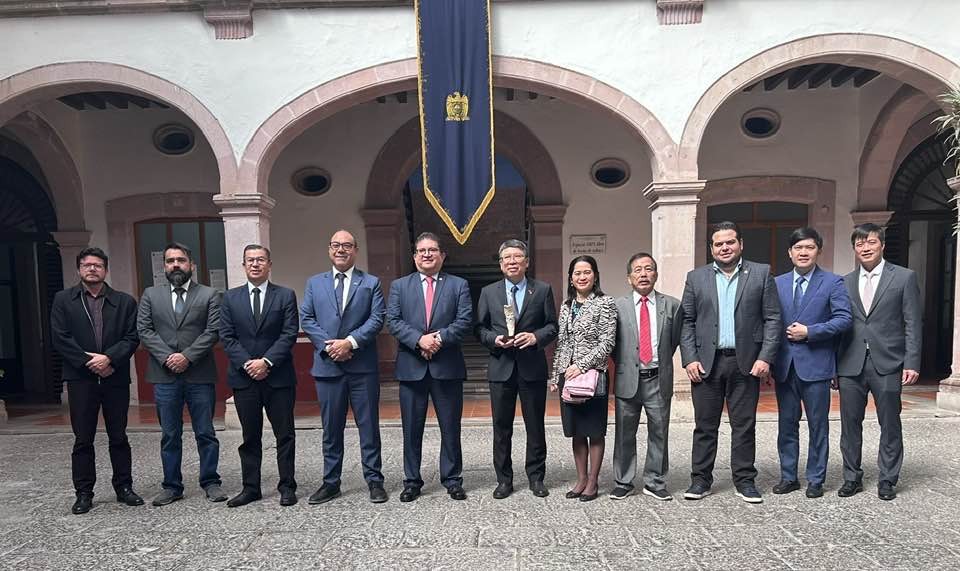Small Mexican Town Celebrates National Donkey Festival
This is a place where every donkey will have its day — a small town just north of Mexico City that gives the beasts of burden a chance on May Day to kick up their hooves.
The annual donkey fair in Otumba attracts up to 40,000 people who come to see the animals compete in costumes and race around a track with jockeys on their backs. Tourists squeeze through the jammed fairgrounds wearing donkey ears and munching on classic fair cuisine, including the local version of burritos — a dish popular both north and south of the Mexican border that borrows the Spanish word for donkey.
Why is “Burro” important in Mexico?
Recent rodeos and town parades have showcased the local horsemen on high stepping stallions- but wait, what’s that short one? Aye, the burro! Such big, intelligent eyes! Look at those ears! The Mexican burro is often made fun of but it is deeply woven into rural Mexican life.
According to National Geographic, in 1531 the Spanish Viceroy in Mexico ordered, “Take three hundred donkeys to distribute among the Indians as well as some sheep.” In essence, it was an impulse decision that introduced a more productive rural way of life. This is how the breeding of mule/burro cattle began to be established in continental America. Later, the donkeys multiplied so much that they were seen wandering in the mountains in wild herds.
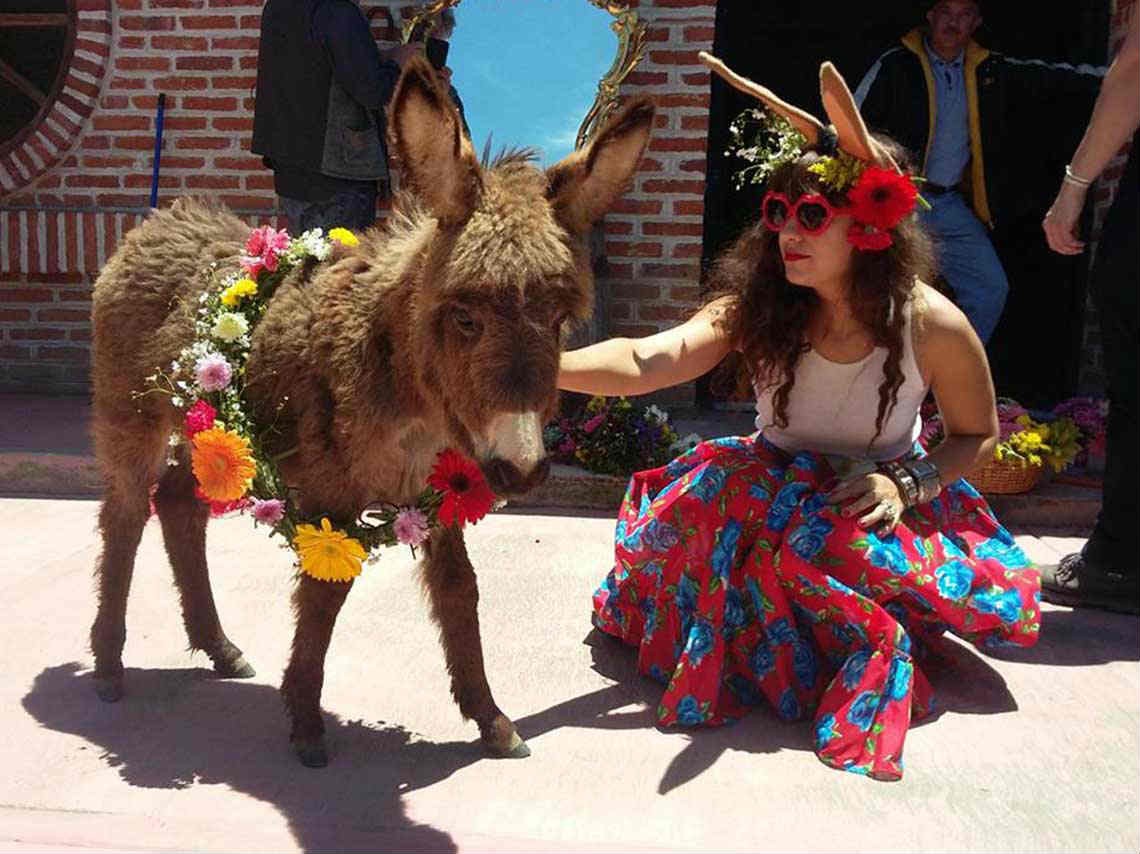 |
| Photo: Dónde Ir |
Donkeys were first brought to Mexico by Spanish conquistadors. They flourished and became a symbol of rural life known for their ability to carry large loads over Mexico’s difficult terrain, but there is a dark side to this donkey tale. Donkeys are disappearing in some parts of this country.
Donkeys are the equine species that is best adapted to live in the desert; His big ears, which for a long time have been a symbol of ignorance in schools around the world, actually allow him to detect imperceptible to humans audio frequencies and dissipate his body heat.
The burros are used as pack animals due to their strength. Their bone structure gives them a drag capacity of up to four times their own weight. Depending on their age, burros can tow up to 2 tons of weight. The burro has a distinctive appearance, its head has a wide forehead topped protruding ears of large proportion to its size. This hardy, compact animal has wide knees and a very calm character. The burro is prized for its great energy and endurance especially its ability to acclimate to heat and water shortage which is typical throughout much of Mexico.
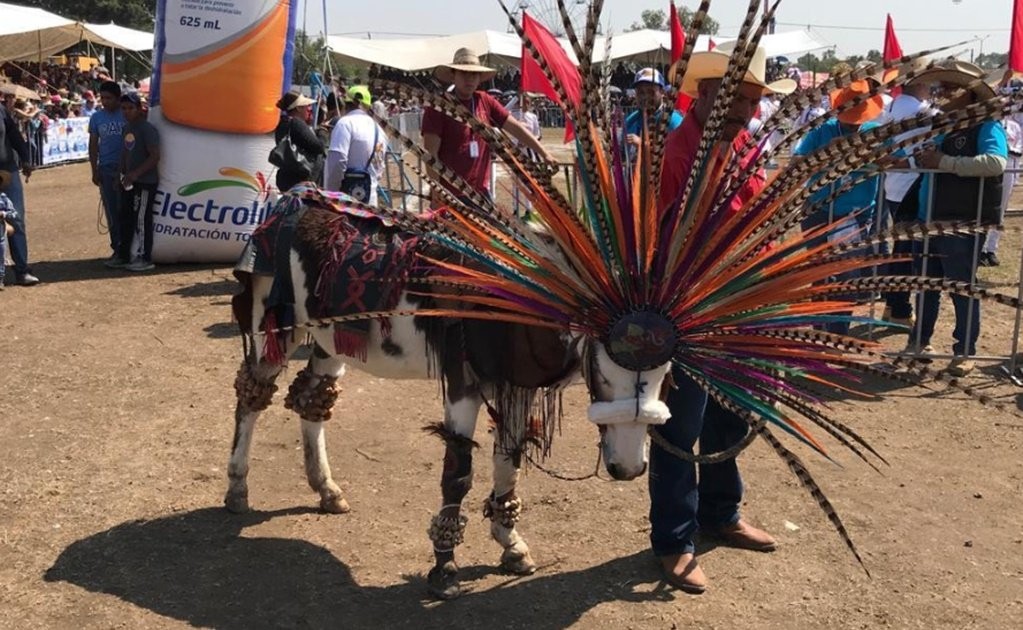 |
| Photo: El Universal |
Although the burro is one of Mexico’s most enduring symbols, all is not well for the hardworking equine. According to a report from the Research and Development site, in 1991 the population of donkeys in Mexico was 1.5 million. By the 2000s the burro had virtually disappeared from the wild with fewer than half a million animals remaining. Some of the causes that could lead this noble species to extinction are the modernization of agricultural work, exploitation of the species, and disinterest in burro conservation.
For centuries the burro was an important part of Mexican rural life. By the early 2000s the burro had virtually disappeared from the wild. The director of the Jalisco Office of Rural Development, Francisco Lugo Serrano, came up with a plan to repopulate with quality stock. He imported 11 donkeys from the USA to reintroduce strong genetic qualities, according to Sol Mexico News.
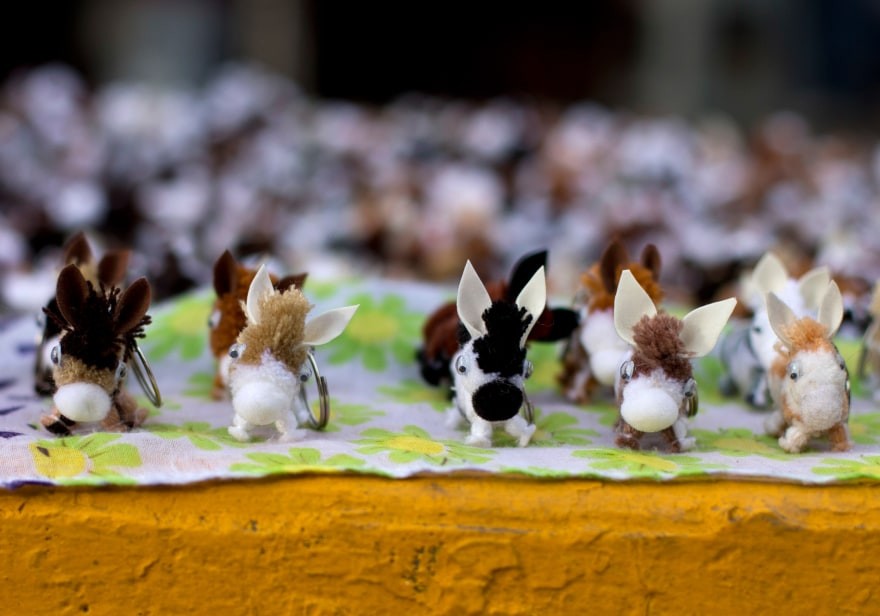 |
| Photo: Rebecca Blackwell / AP |
Donkeys honored in Mexican town with their own special day
Set on an important crossroad 61km (38 miles) northeast of Mexico City, Otumba (aka Otompan or Otumba de Gómez Farías) was a major centre for the sale of donkeys during the colonial period. The beasts of burden were used to carry goods and people back when the conditions of many roads were poor. But after highways were constructed and Otumba transitioned into a suburb of Mexico City, the residents here decided that donkeys deserve a day of honour. Therefore, since 1965, the Feria Nacional del Burro (National Donkey Festival) has been celebrated on 1 May annually.
Cecilia Samiji, a government representative, said the focus of this year’s event which attracted thousands of spectators, was the protection and conservation of the hard-working animals. The municipality, she added, is working with a sanctuary to preserve and take care of the donkeys.
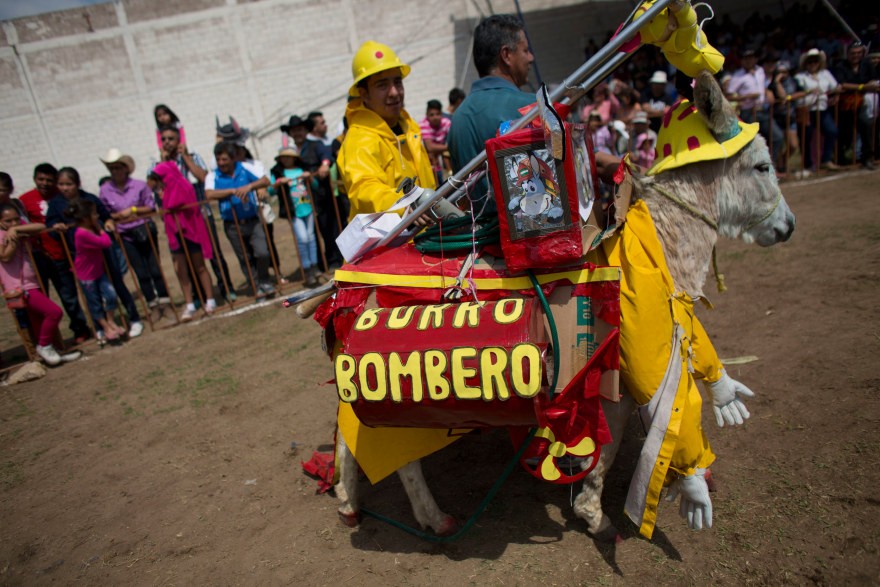 |
| Photo: Rebecca Blackwell / AP |
Attracting some 50,000 people annually, this donkey-mad extravaganza features a huge array of events – donkey races, donkey polo, donkey dressing up as historical and pop-culture characters, donkey-shaped hot air balloons, along with hundreds of stalls selling snacks and pulque, an agave-based alcoholic drink.
After a bout of hard snacking and drinking, the locals relish the opportunity to inform visitors about the virtues of donkeys, proudly asserting that they are the most hardworking of animals and the embodiment of loyalty and nobility.
If you can’t get enough of the floppy-eared equines, visit Burrolandia, the donkey sanctuary nearby for more donkey-related activities.
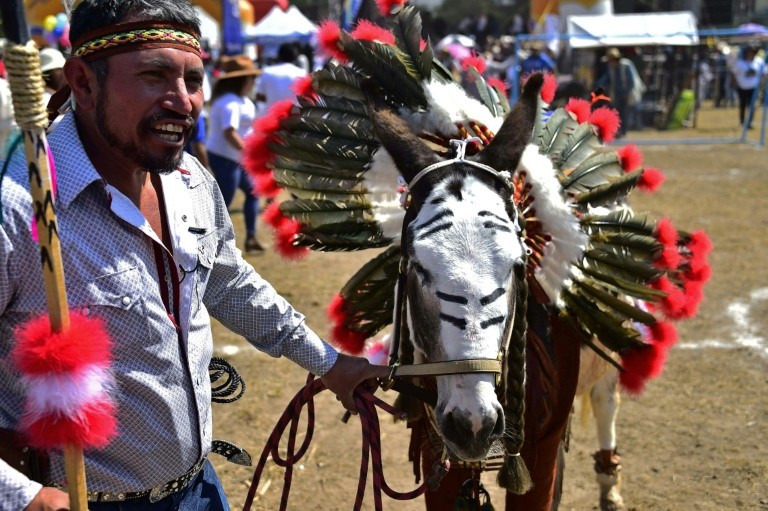 |
| Photo: Hispanos Press |
"Donkeys are in danger of extinction due to technological innovation. They were once used as a means of transportation and for field work. They have been replaced by technology but the municipality is working with a sanctuary, a sanctuary for donkeys named "Burrolandia" to preserve the species, take care of them and let them reproduce," she said.
About sixty years ago, Otumba residents relied heavily on these work animals and decided they deserved their own day of honour, according to The Straitstime.
Other wonderfully bizarre Mexican festivals
Noche de los Rábanos
The Night of the Radishes is an annual event held on December 23 in Oaxaca, Mexico, dedicated to the carving of oversized radishes (Raphanus sativus) to create scenes that compete for prizes in various categories.
The event has its origins in the colonial period, when radishes were introduced by the Spanish. Oaxaca has a long wood carving tradition and farmers began carving radishes into figures as a way to attract customers’ attention at the Christmas market, which was held in the main square on December 23. In 1897, the city instituted the formal competition. As the city has grown, the government has had to dedicate land to the growing of the radishes used for the event, supervising their growth and distribution to competitors. The event has become very popular, attracting over 100 contestants and thousands of visitors. Since the radishes wilt soon after cutting, the works can only be displayed for a number of hours, which has led to very long lines for those wishing to see them. The event also has displays and competitions for works made with corn husks and dried flowers, which are created with the same themes as those with radishes.
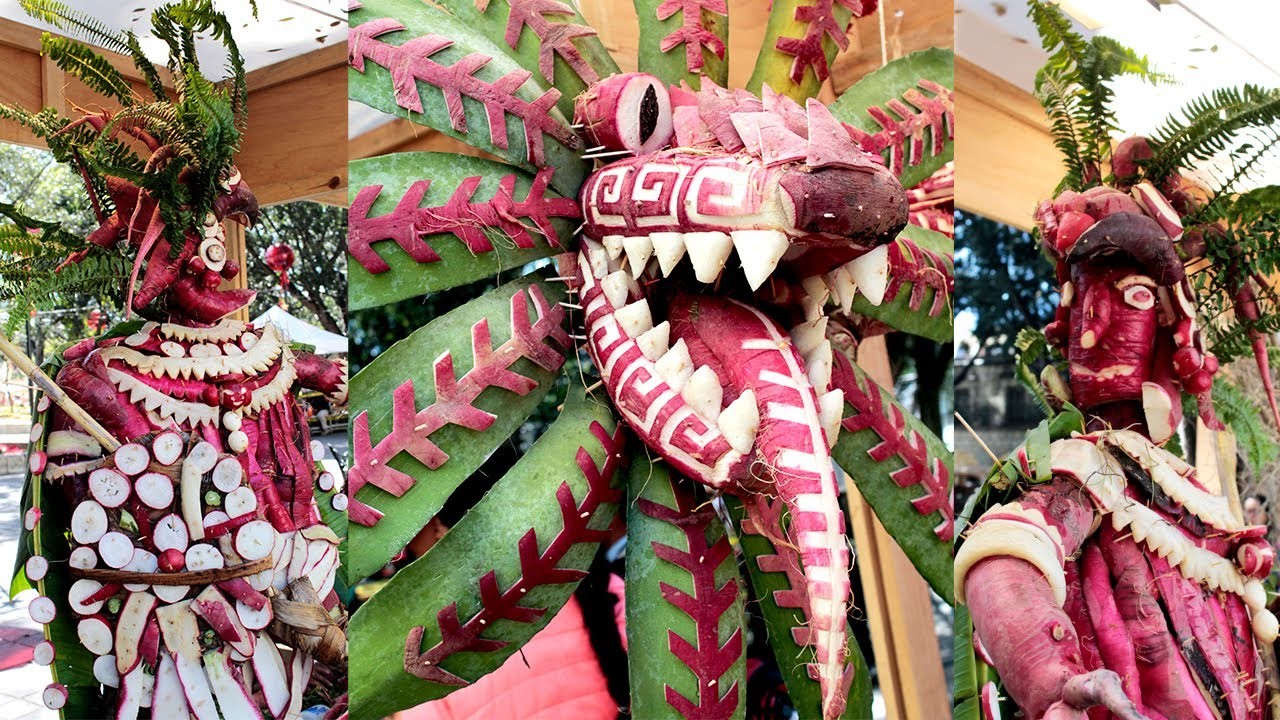 |
| Photo: Iván Vásquez |
Native to China, radishes were introduced to Mexico by the Spanish, particularly by the friars. Over time, the crop became used as a side dish or snack, or carved into decorations for special dishes. In the colonial period, the radishes began to be carved with religious themes in relation to the annual Christmas market held in the city of Oaxaca on December 23, with the encouragement of priests. The carvings were a marketing gimmick, with farmers using them to attract the attention of shoppers in the market in the city plaza. Eventually people began buying the radishes not only to eat, but to create centerpieces for Christmas dinners.
The legend as to how the event began says that one year in the mid-18th century, the radish crop was so abundant that a section lay unharvested for months. In December, two friars pulled up some of these forgotten radishes. The sizes and shapes were amusing, and they brought them as curiosities to the Christmas market held on December 23. The misshapen vegetables attracted attention and soon they began to be carved to give them a wider variety of shapes and figures.
In 1897, the mayor of the city, Francisco Vasconcelos, decided to create a formal radish-carving competition, which has been held each year since.
Over the years various types of radishes have been used both in Oaxacan cuisine and for carving. A large completely white type called criollo was used earlier, as it did not rot as readily and adopted more capricious forms. While this variety has since disappeared, an image of them can be seen in a work by Diego Rivera called "Las tentaciones de San Antonio".
Fiesta de las Velas de Juchitán
If you’re looking for a colourful festival that runs for five months in Mexico, look no further than the festivals of velas (candles), held in the towns of Juchitán de Zaragoza and Tehuantepec, about 276km (172 miles) southeast of Oaxaca City.
From April to September, 26 festivals of candles are held here. Some said the original intention was to commemorate the Batalla de Juchitán in 1866, while others believe the festivals were to mark different patron saints and grow substantially over the years.
 |
| Photo: El Imparcial de Oaxaca |
Today, many of the 26 festivals focus on the identity of different interest groups. For example, the Union of Fishermen has a popular vela festival. Another favorite is the vela of Las Auténticas Intrépidas Buscadoras de Peligro (The Authentic Intrepid Seekers of Danger), which celebrates the muxes, a group of transsexual men generally accepted in Zapotec society as a ‘third gender’.
While the festivals run for five months, the month of May sees the most parties as the towns honor patron saint Vincent Ferrer. During this time, women wear trajes de tehuana, handmade dresses covered with radiant floral patterns, and have flowers pinned in their hair. In contrast, men wear austere black trousers and traditional white shirts known as guayabera. At almost every party, women, muxes, and men all dance and drink copious amounts of beer.
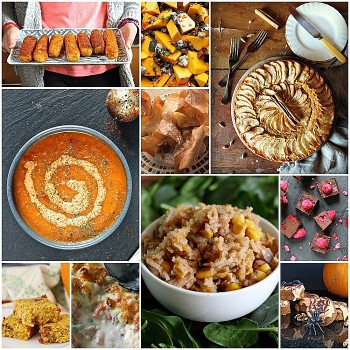 | Various Autumn Dishes Around The World for Food Lovers Now countries around the world are immersed in autumn colors, besides the beautiful scenery, the culinary specialties of this season are equally attractive to tourists. |
 | Extraodrinary Hidden Beach in Mexico: Everything You Need To Know If you are thinking of somewhere tropical and unique to visit in your holiday, Mexico's Playa del Amor, also known as Hidden Beach, is a ... |
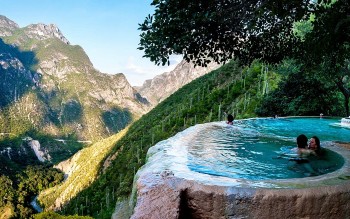 | Holiday Relaxation: Visit Las Grutas Tolantongo Mexico Hot Springs Grutas Tolantongo Hot Springs, located in the Mezquital Valley, State of Hidalgo in Mexico, is a beautiful and relaxing destination that attracts many tourists wanting ... |
Recommended
 World
World
US, China Conclude Trade Talks with Positive Outcome
 World
World
Nifty, Sensex jumped more than 2% in opening as India-Pakistan tensions ease
 World
World
Easing of US-China Tariffs: Markets React Positively, Experts Remain Cautious
 World
World
India strikes back at terrorists with Operation Sindoor
Popular article
 World
World
India sending Holy Relics of Lord Buddha to Vietnam a special gesture, has generated tremendous spiritual faith: Kiren Rijiju
 World
World
Why the India-US Sonobuoy Co-Production Agreement Matters
 World
World
Vietnam’s 50-year Reunification Celebration Garners Argentine Press’s Attention
 World
World





